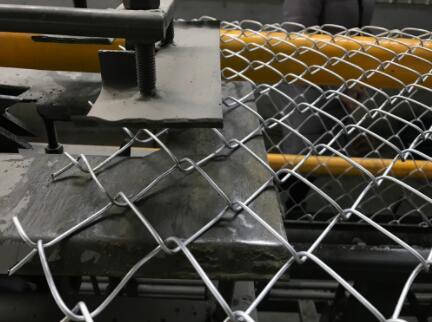Exploring the Versatility of Hexagonal Perforated Steel Sheets
In the realm of materials engineering and architectural design, hexagonal perforated steel sheets have emerged as a prominent choice for various applications. Their distinctive design, characterized by a series of hexagon-shaped perforations, offers a blend of aesthetic appeal, structural integrity, and functional versatility. This article delves into the intricate features of hexagonal perforated steel sheets, highlighting their applications, benefits, and the innovative possibilities they provide in modern construction and design.
Understanding Hexagonal Perforated Steel Sheets
Hexagonal perforated steel sheets are made from high-quality steel and exhibit a pattern of evenly spaced hexagon-shaped holes. This unique perforation not only enhances the visual aspect of the material but also affects its mechanical and physical properties. Depending on the size, orientation, and spacing of the perforations, these sheets can vary in their capacity to allow airflow, light penetration, and fluid drainage, making them valuable in a range of industries.
The hexagonal shape is particularly significant because it is one of the most efficient shapes for tiling a plane without gaps. This geometric advantage contributes to the aesthetic design while maintaining strength and minimizing material usage. As a result, hexagonal perforated sheets are both lightweight and durable, providing an excellent balance of form and function.
Applications of Hexagonal Perforated Steel Sheets
1. Architectural and Interior Design Hexagonal perforated sheets are increasingly being utilized in architectural facades, ceilings, and interior wall cladding. They are popular for creating dynamic visual effects, allowing for the play of light and shadow, which enhances the overall aesthetic of a space. Architects often use these sheets to design eye-catching buildings that stand out in urban landscapes.
2. Industrial Uses In industrial settings, hexagonal perforated sheets are used in applications that require ventilation, filtration, and sound absorption. For instance, they can be found in machinery covers, equipment enclosures, and sound barriers. The perforations allow for adequate airflow while blocking unwanted noise, making them ideal for factory environments.
3. Furniture Design The versatility of hexagonal perforated sheets extends to contemporary furniture design. Designers favor these materials for creating unique pieces such as tables, chairs, and shelving units. The perforations can be strategically placed to provide a lightweight structure while maintaining strength, enabling innovative designs that would otherwise be impossible with solid materials.
4. Automotive and Aerospace Industries The automotive and aerospace sectors have also recognized the advantages of hexagonal perforated steel sheets. Their strength-to-weight ratio makes them suitable for various components where weight reduction is crucial without sacrificing durability. This feature is particularly beneficial in designing components that contribute to fuel efficiency and performance.
hexagonal perforated steel sheet

Benefits of Using Hexagonal Perforated Steel Sheets
The benefits of hexagonal perforated steel sheets are manifold
. Here are several key advantages- Aesthetic Appeal The unique hexagonal pattern adds an element of sophistication to any project, making it a favorite among designers and architects.
- Functional Versatility The ability to customize hole sizes, spacing, and material thickness allows for tailored solutions that meet specific project requirements, be it for soundproofing, ventilation, or decorative purposes.
- Lightweight and Durable These sheets provide strength and durability while being significantly lighter than solid sheets of steel, leading to easier handling and installation.
- Sustainability Steel is a recyclable material, making hexagonal perforated steel sheets an environmentally friendly option for those seeking sustainable building materials.
Innovations and Future Trends
As technology advances, so too do the applications and innovative designs incorporating hexagonal perforated steel sheets. The integration of digital fabrication techniques, such as CNC machining and laser cutting, allows for even more intricate and customized designs. Furthermore, advancements in coating and finishing processes enhance the durability and corrosion resistance of the steel, ensuring it can withstand harsh environments while maintaining its visual appeal.
In conclusion, hexagonal perforated steel sheets represent a versatile and dynamic option for various industries, blending aesthetic appeal with functional integrity. Their applications span across architecture, manufacturing, and design, showcasing the ability to enhance structural performance while contributing to visual creativity. As we move forward, the potential for innovative applications continues to expand, promising exciting possibilities for architects, designers, and engineers alike.

















